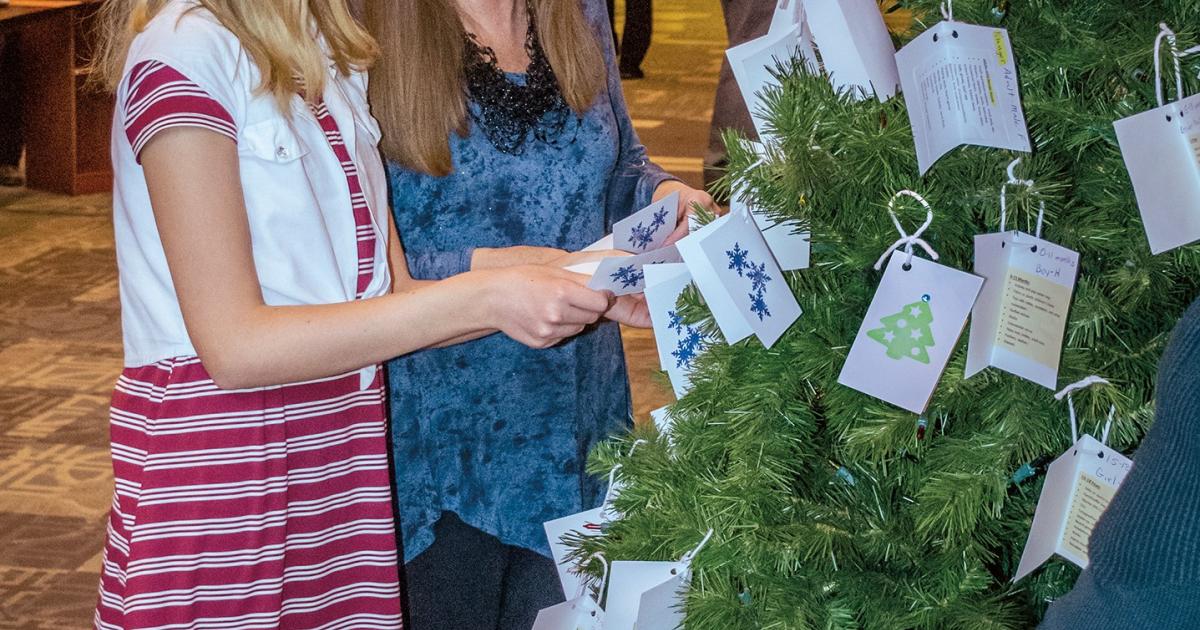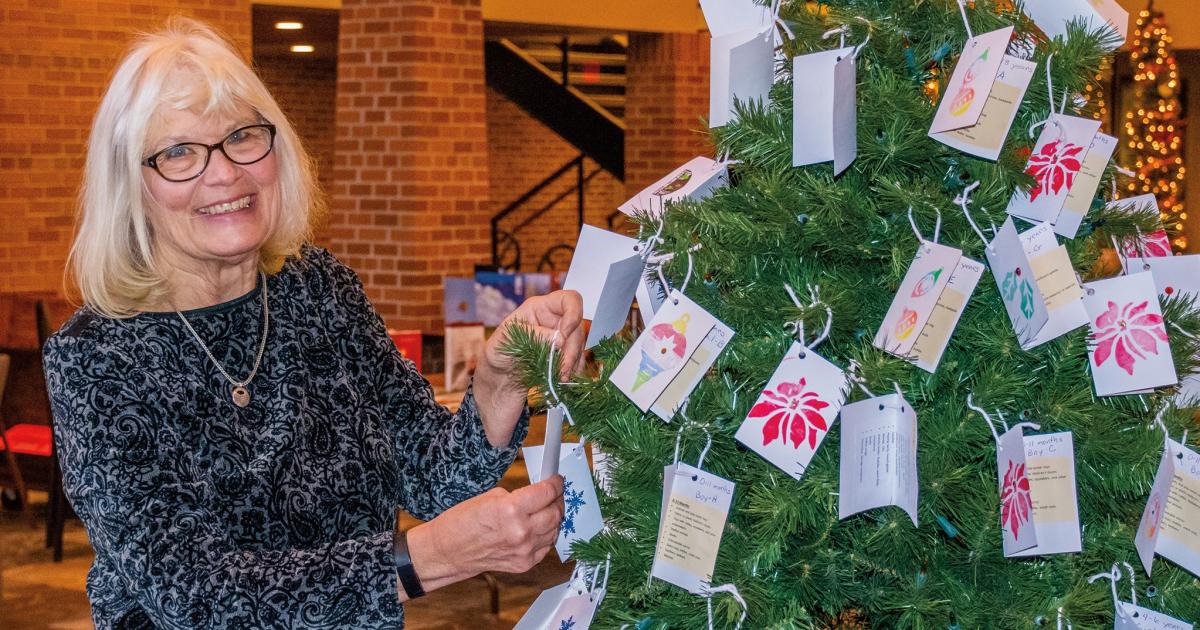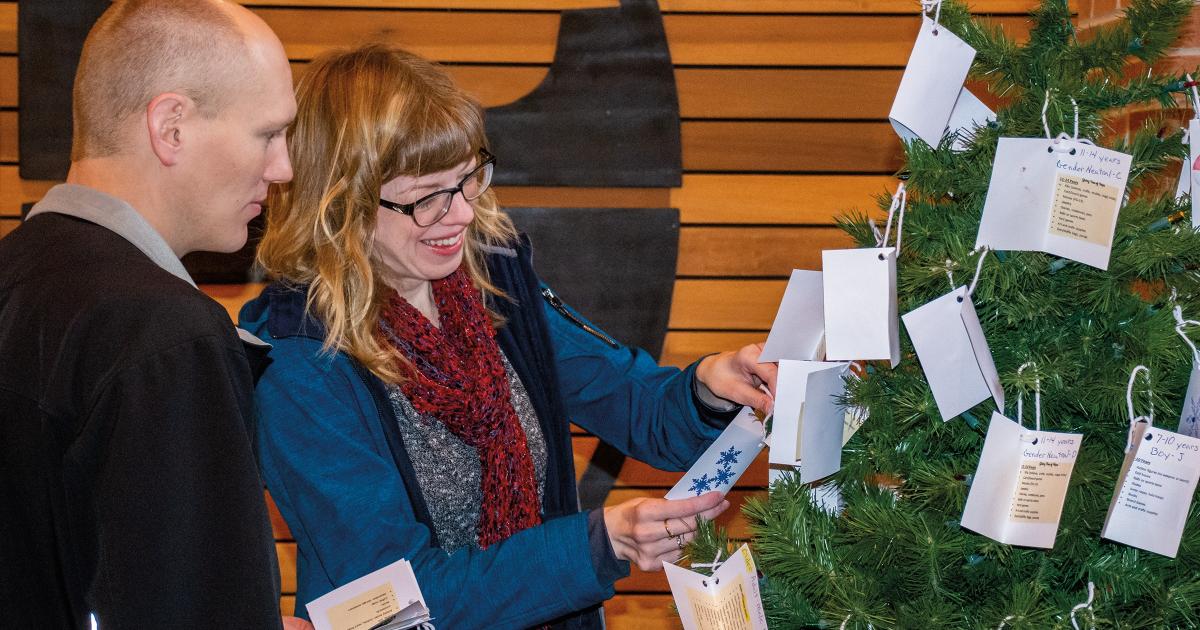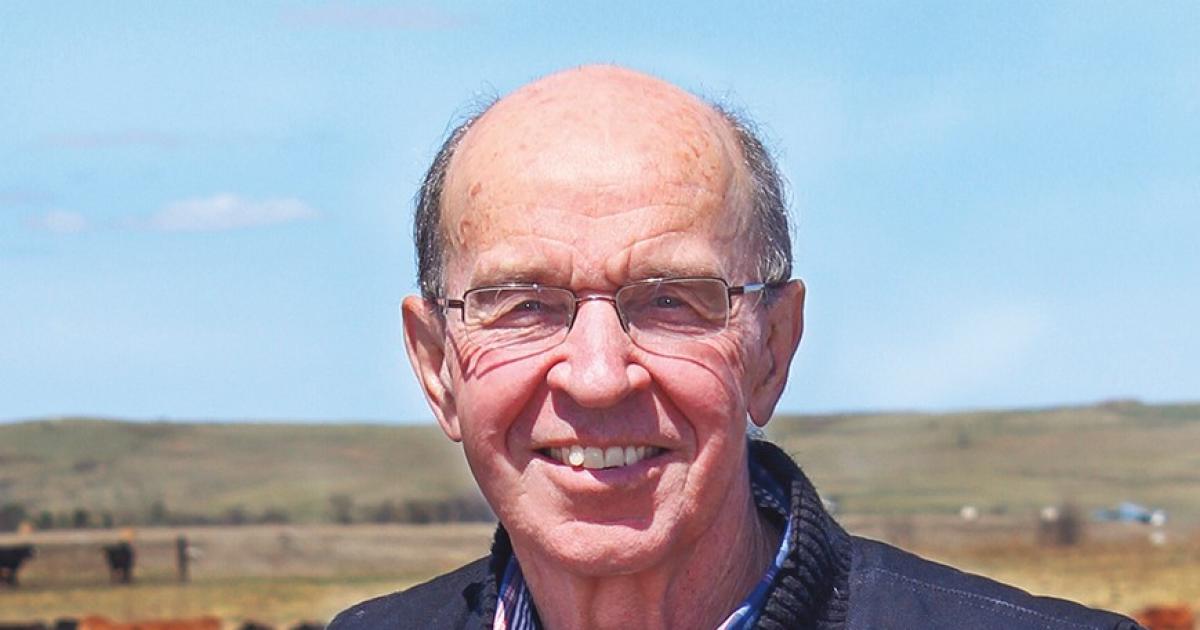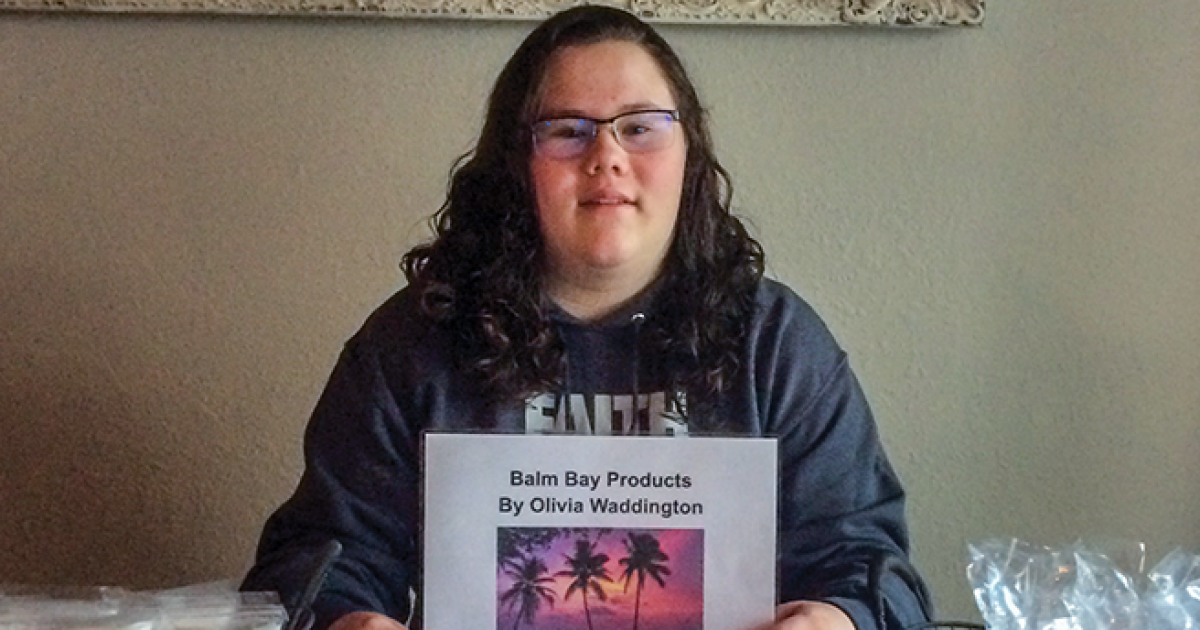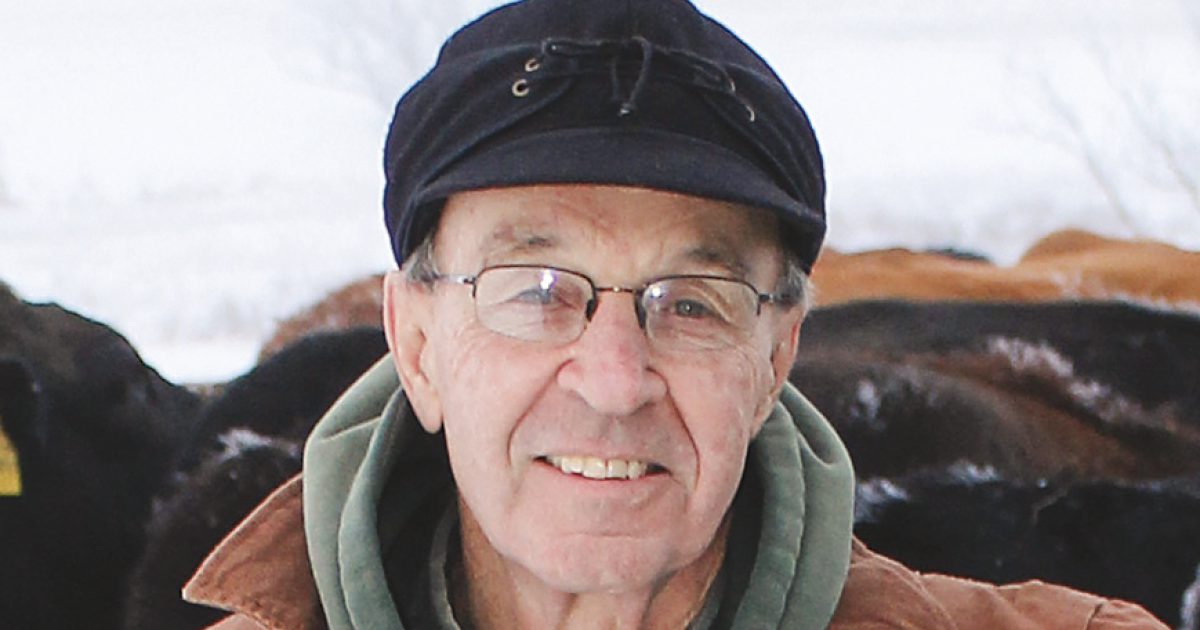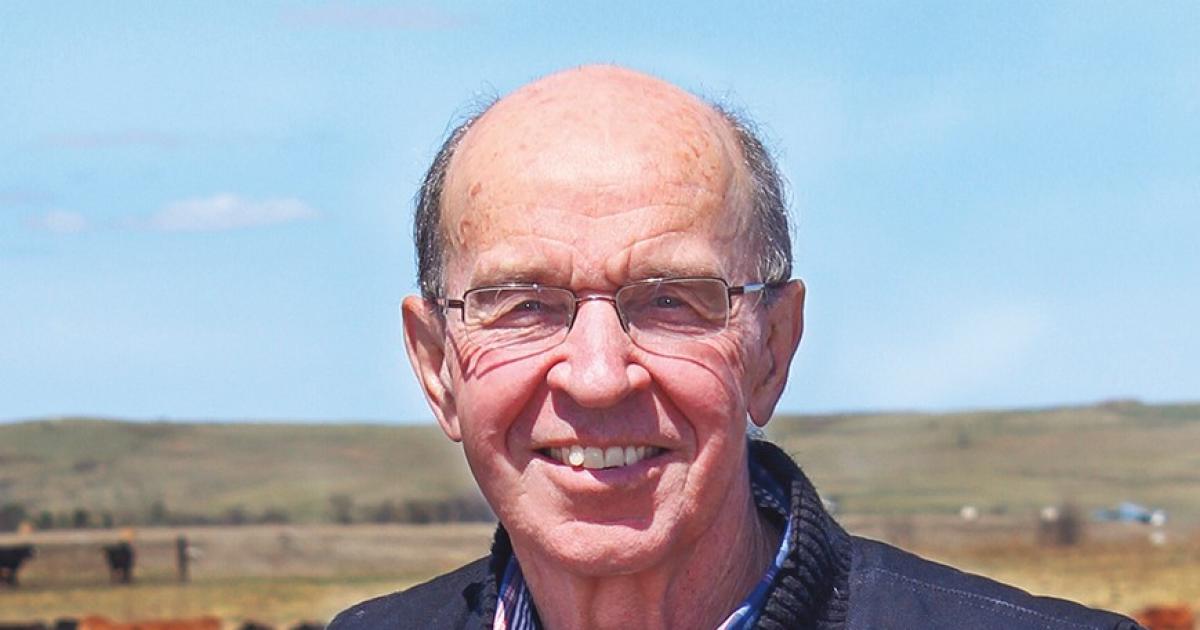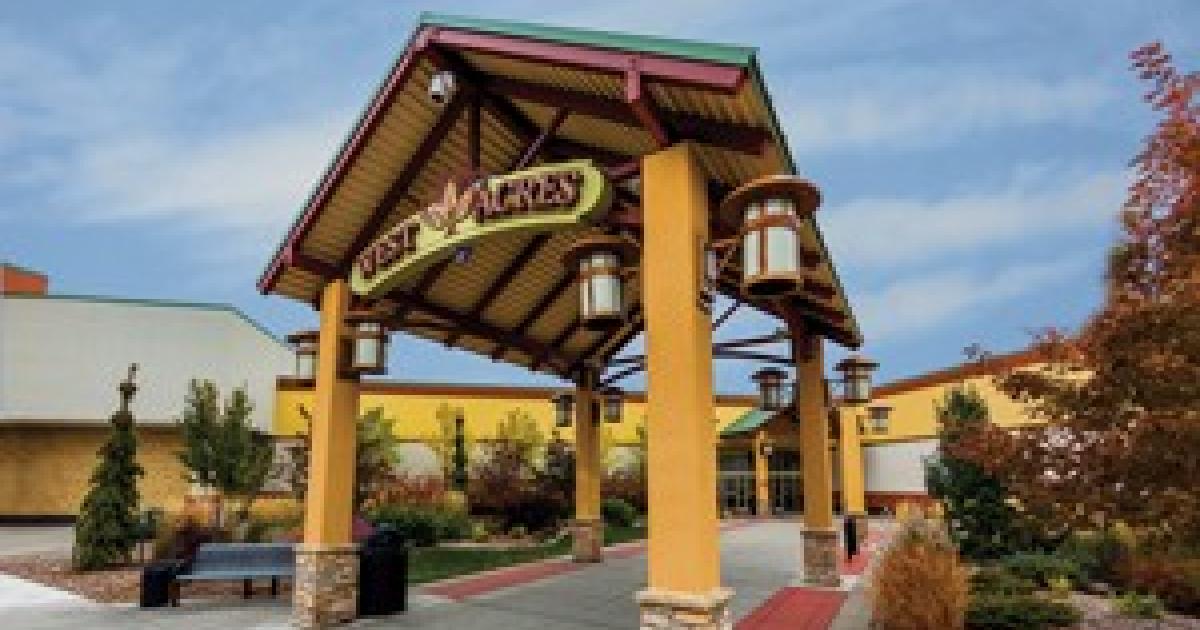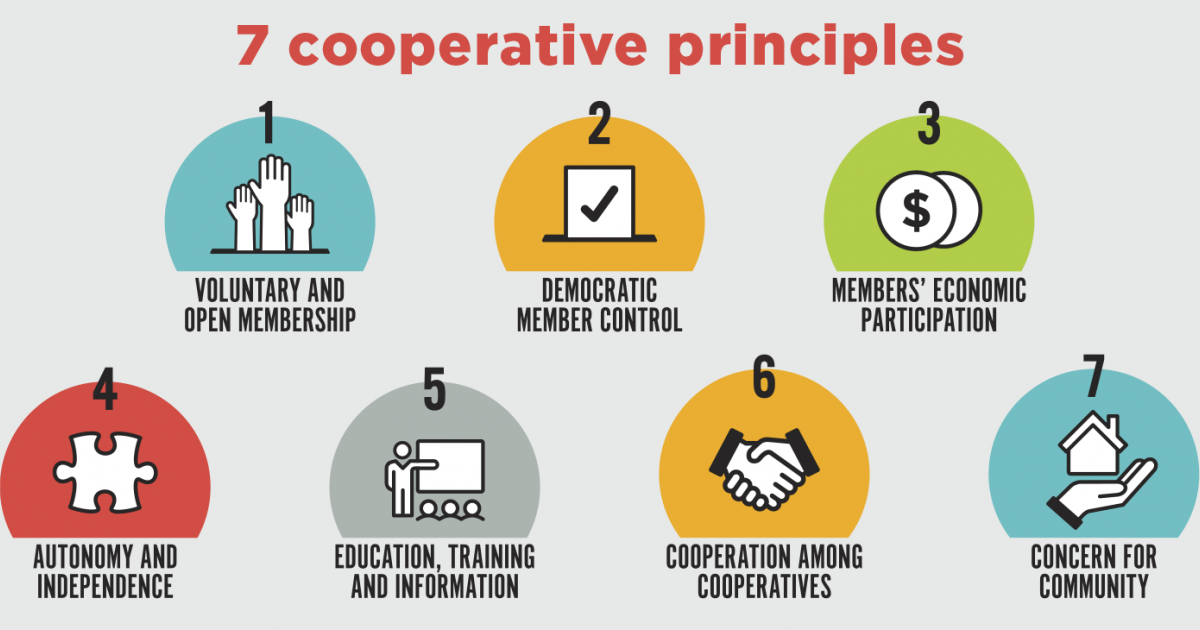Putting food on the table or Christmas gifts? Paying the electric bill or Christmas gifts
Imagine having to weigh these decisions. Many families face such choices, in communities of all different sizes, across North Dakota.
Chloe Hall and her mom, Patti, select individuals to buy Christmas gifts for as part of their church’s Giving Tree of Hope program.
“You don’t realize how many people struggle around the holidays,” says Cindy Miller, executive director of FirstLink, a connector of people and resources. “Imagine, as a kid, if you didn’t get anything, but all your friends at school did.”
That blue thought – and reality – has sent communities into action, rallying around families in need, for decades, especially during the holidays. Locally, a joint community effort, coordinated by FirstLink, of Fargo area churches and businesses, countless volunteers and generous community members has helped to ensure all kids experience the joy that comes from tearing into shiny, bright-colored wrapping paper on Christmas morning.
And that joy certainly ripples through those who learn the magic of Christmas giving and “Angel Tree” programs.
ANGEL TREES
Salvation Army Majors Charles and Shirley White were credited with creating the Angel Tree program in 1979, when they worked with a Lynchburg, Va., mall to provide clothing and toys for children at Christmastime. An explanation from a Salvation Army website reads:
“The program got its name because the Whites identified the wishes of local children by writing their gift needs on Hallmark greeting cards that featured pictures of angels. They placed the cards on a Christmas tree at the mall to allow shoppers to select children to help.”
Today, one may find similarly decorated Christmas trees in churches, businesses and shopping centers across the country. Individuals select ornaments off the tree, which include gender and age information, that represent a local child in need. Then, they shop for a Christmas present to be gifted to that little boy or girl.
‘HOW I WAS RAISED’
“I remember my dad always saying it would be fun to win the lottery, because it would be fun to figure out how to give it all away,” recalls Mary Ann Ouradnik. “That’s how I was raised.”
It is no surprise, then, that Ouradnik has become a staple figure in her church’s “Angel Tree” program. For over 30 years, she has hand-stenciled, decorated, folded, hole punched and hung thousands of paper ornaments on a Christmas tree set up in the atrium of her church, Olivet Lutheran, in Fargo.
Ouradnik’s involvement goes back to the program’s origin at Olivet. As a member of the Social Concerns Committee, which tackles local issues like hunger, they had heard about a similar volunteer gift-giving program.
“We thought, ‘Maybe we can do something like that,’” Ouradnik says.
Today, Olivet participates in the Giving Tree of Hope program, coordinated by FirstLink. Ouradnik estimates that 250 to 300 gifts will be purchased by church members this holiday season for children and adults with disabilities. In addition to gifting through the community Giving Tree of Hope program, some handmade ornaments at Olivet represent church members, who have been identified by staff as those in need.
“People (at the church) do wait for this to come,” Ouradnik says. “This is how they’re going to do their giving at Christmastime.”
Cass County Electric Cooperative and Olivet members Josh and Carrie Herberg are perfect examples. The Herbergs take their time examining the ages, genders and gift suggestions on the paper ornaments, following a recent Sunday church service.
“We have five nephews, so we like to focus on gifts for the girls!” Josh says with a smile. “My parents did this when I was growing up, so we want to do it, too.”
“I also had an aunt that always gave Christmas gifts to my siblings and I, even though she didn’t have the means, so I do it in honor of her, too,” Carrie adds.
With genuine warmth in their voices, the joy of giving appears at work in Josh and Carrie.
“Giving back is important, especially around Christmas,” Carrie says.
GIVING TREE OF HOPE
Now in its 46th year, the Giving Tree of Hope program has been providing Christmas gifts to children and adults with disabilities far before the Smiths coined the “Angel Tree” phrase.
Last year alone, the program donated over 5,000 gifts to more than 1,200 households. Six agencies help identify families in need and connect them with the program.
“It’s uplifting and just makes you proud to live here,” Miller says.
She says, in modesty, that the program really runs itself, thanks in great measure to 195 volunteers who donate over 1,000 hours of time. Volunteers staff locations at numerous churches and businesses, and in a high-traffic mall space donated by West Acres. And these numbers don’t capture the hundreds of families who donate gifts.
After a monthlong window of ornament selection and gift buying, volunteers collect all of the gifts and organize them at a central location, where families come to pick up their donated presents.
“The gym is packed with rows of presents lined up,” Miller says. “Seeing that, it makes people think about it a little more.”
Because FirstLink’s mission is to connect people with community resources, whether it be assisting with access to community-based services and supports through their 24/7 helpline or by lending a nonjudgmental ear for someone suffering a mental health crisis, they’ve also added a resource connection component to gift pick-up day.
“We have this captive audience that we’re trying to help, so we just thought we should do something more. We have about 10 to 20 nonprofits there to try to link people with more help,” Miller says.
Parents pass by the social service booths while in line for gifts, receiving information on programs like Head Start and local food pantries. New this year, FirstLink has also added a job fair, where parents have the option to visit with potential employers.
“Our mission is about connecting people to resources. It is about giving hope. We try to give hope 24 hours a day, seven days a week. And this program does that, too,” Miller says.
Miller points out that the FirstLink program is not unlike many other programs operating in communities across North Dakota. For those places lacking a Christmas gift-giving program, she encourages communities to give it a shot.
“Find out if someone’s doing one, and if not, get together and start out!” she says. “Do it on whatever level you can. Just seeing the faces of people that come in, and volunteering, it’s a feel-good feeling for everyone.”
DOING MORE
Each year at the end of September, Ouradnik takes out her craft supplies. She begins the lengthy process of preparing the ornamental tags for Olivet’s Giving Tree. But she doesn’t mind the work; she does it at her own pace. The magic of Christmas giving fuels her tank.
Ouradnik recalls taking small church youth groups out over the years to shop for the Giving Tree kids.
“I just think it’s good for kids to learn that it’s good to do things for somebody else,” she says.
While visiting in-between church services, families stop to pluck Ouradnik’s stenciled tags off the tree. Emotion floods over her.
“Have you ever seen the movie ‘Schindler’s List?’” Ouradnik asks. She references the “I could have done more” sentiment from the film, which tells the story of a German businessman whose priorities shifted from making money to saving thousands of Jews from eminent death in Nazi Germany.
It seems, despite all she’s given of herself, Ouradnik’s faith and kindness pull her to do even more.
“There’s always been need in the community,” she says. “The more you get involved, the more you realize how much need there is. And you realize, I don’t need some of the things I think I need.”
Perhaps Christmas angels do walk among us.
Cally Peterson is editor of North Dakota Living. She can be reached at cpeterson@ndarec.com.


